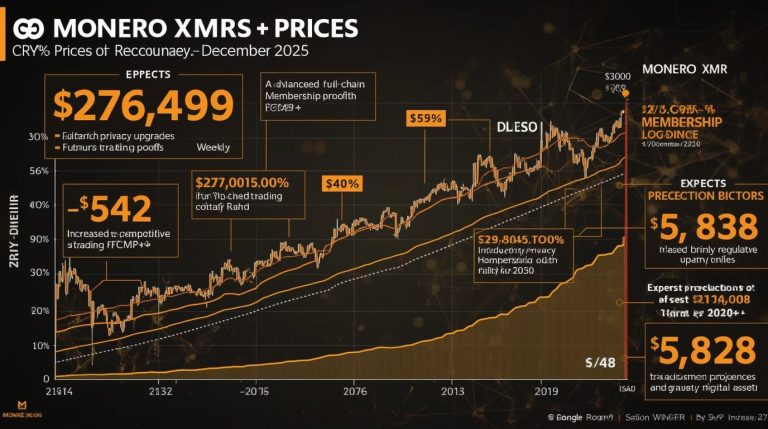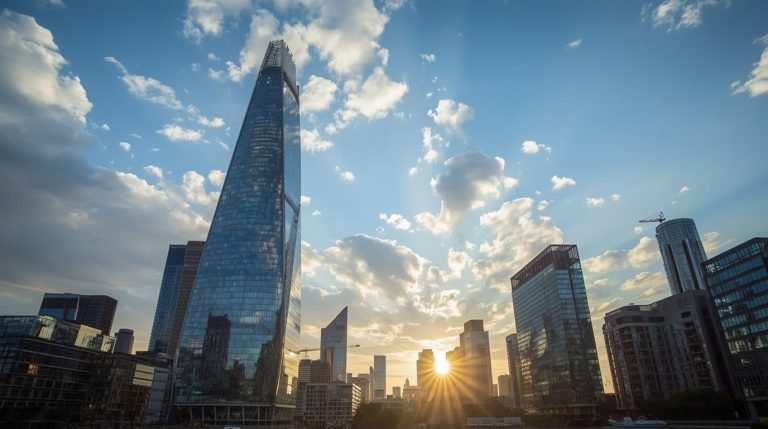With a spectacular 23% increase per week to start December 2025, Monero (XMR) is having its time in the limelight of the cryptocurrency scene, almost single-mindedly opposing overall market volatility and governmental scrutiny of privacy coins. Traded at an average of $406, it is a privacy-oriented asset that is attracting lots of attention due to its anonymous transactions in a more monitored digital economy.
In a future-driven momentum and advanced technology upgrades, Monero is a strong player, whereas its competitors, such as Zcash, have been losing by 25%. This movement shows an increase in the demand to use untraceable crypto, and XMR becomes one of the strongest competitors to reach the highest annual close to date, as specialists expect to achieve advances that will transform privacy on blockchain.
The Breathtaking Price Action of Monero in Market Unrest
The Monero price has been on the rise and has reached $406 since the beginning of the month in December 2025 due to the 23% rise in the past week, as futures market speculations take the centre stage. Interest in XMR derivatives is increasing by 7 per cent, and perpetual bid-ask deltas are becoming positive, which shows that there is a massive interest in the bullish sentiment, although there is no change in the spot demand.
A small CME crash was used to test the resiliency of the market, but Monero reached a short-run high of $420, which demonstrates its technical strength. This is an excellent performance in the face of uncertainty in the wider crypto industry, although Monero, not being tied to peers, highlights its special offer in terms of privacy keeping.
Comparatively, Zcash (ZEC) has fallen by almost a quarter during the same time, which points to the unstable nature of the privacy coin segment. As of April 2019, it is reported that Zcash has momentarily surpassed Monero in market capitalisation, hitting $10.6 billion, due to the renewed interest of investors in optional privacy features that can attract institutional investors.
Nevertheless, the market cap of Monero floats around the 8-billion mark, and approximately 18.45 million XMR are in circulation, which keeps the coin at the 19th position. The large 9.6% over-the-counter trading premium, of 431 to 393 on the centralised exchanges, is indicative of a strong demand to purchase without undergoing KYCs and points to the possibility of underground adoption to exert pressures on exchanges to reconsider delisting decisions in the past.
Technological Investments Moving the Momentum of Monero
Monero is not only riding a wave of price appreciation, but also a wave of major technological progress on its privacy-focused technology. Beta testing of the stressnet, completing the integration of full-chain membership proofs (FCMP ++ ), is improving the obfuscation of the transaction and security.
This update brings together ring signatures, stealth addresses, and confidential transactions, which provide default anonymity that distinguishes Monero among pseudonymous competitors such as Bitcoin.
There is a lot of buzz around community discussions about quantum resistance programs and possible relistings on leading exchanges, as this may expand access and increase liquidity.
In spite of these advantages, there are still a number of issues, such as the mining centralisation issues. Qubic Pool controls nearly 33% of the network hash rate, which worries about the possibility of selfish mining attacks, and developers are developing the Publish or Perish proposal to minimise the risk.
P2Pool decentralised mining share is under attack, and it is hoped that it will recover to over 15% this week. This is to ensure the integrity of the network, given that there is an increasing number of threats posed by quantum computing. These upgrades offer these users in high-surveillance regions financial privacy, which is as secure as using digital cash, strengthening the use of Monero in decentralised finance (DeFi) and in daily life.
Privacy Coins Regulatory Headwinds and Competitive Landscape
Monero and other privacy coins continue to be under regulatory scrutiny, with governments considering them possible facilitators of illegal operations. However, the advocates claim that anonymity is required to maintain financial freedom, and this can be compared to the traditional money systems.
In December 2025, Monero proceeds with the recovery, and the bulls are aiming to break through the high of the year to the highest yearly close on the resistance level of 419. Stable growth by large-wallet investors promotes this push, despite 10-year extreme fear by the Fear & Greed Index, with 9.57% volatility and 57% green days during the past month.
Competition intensifies as the market cap lead of Zcash indicates a shifting trend and may be affected by such filings as the Grayscale Zcash ETF, which would have an overall effect on the values of privacy coins.
Monero, nevertheless, is the one to consider when having a must-have privacy, and its price history confirms that it is very supportive at approximately 380 and resistant at the range of 420. Provided that buyers continue their growth, XMR is one of the best cryptos to consider as the new bull run might start with the daily close higher than $327.
Expert Monero Price Predictions for 2025 and Beyond
The analysts are optimistic about the Monero direction in the month of December 2025. In the short term, the projections are an increase of 8.52% to $442.52 by mid-December, where the upper limit can be reached to 452.
Over a year, the estimates would be between a minimum of $226 and a maximum of 420, averaged at around 300, but optimistic opinions are that it will hit 756 at the end of the year due to privacy demand and DeFi integrations. According to other sources, the target peak is projected for December, at 469.99 with a floor of 458.71.
Going further, by 2026, Monero would be at 463 with a growth of 5%/year, and therefore, in the year 2030, Monero would be valued at 563. Bulls have until 2030 a long-term projection of up to 5,828 on the condition of favourable regulations, technological advantages, and such macroeconomic forces as inflation hedging.
These estimates are dependent on long-term adoption, and the strength of Monero against crackdowns puts it in a potential position of achieving $1,000 milestones in case privacy transactions become mainstream.
The Future of Monero in the Changing Crypto Ecosystem
The direction taken by Monero in December 2025 is both promising and risky. Its focus on anonymity appeals in a world full of surveillance, which encourages growth in the usage of merchants and Decentralised Finance.
A breakout imminent now that we are about to hit the all-time high of 517 will take XMR to new heights, particularly with the successful implementation of network improvements such as FCMP++. Nevertheless, resolving the gap in mining and avoiding international regulations will be the key to preventing the backlash.
The investors ought to monitor the trends in futures, P2Pool, and the ETF advancements, which may trigger rallies or corrections. Monero has interesting arguments in its practical use of privacy in the real world, especially in a market where utility is highly valued more than speculation.
Regardless of the outcome of consolidating 2026 and approaches to new highs this month, Monero remains a symbol of financial independence, which shocks the crypto world and the wider community.












 Bitcoin
Bitcoin  Ethereum
Ethereum  Tether
Tether  XRP
XRP  USDC
USDC  TRON
TRON  Lido Staked Ether
Lido Staked Ether  Cardano
Cardano  Avalanche
Avalanche  Toncoin
Toncoin  Wrapped SOL
Wrapped SOL